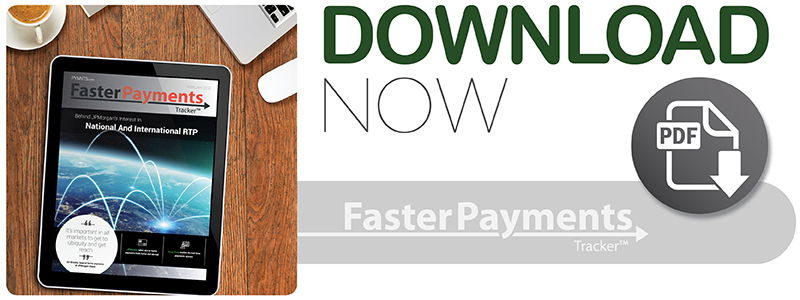JPMorgan’s Interest In National And International RTP
Countries from the U.K. to Singapore have long been home to real-time payment schemes, but speed lagged behind when it came to America.
It wasn’t until November 2017 that The Clearing House (TCH) debuted its Real-Time Payments (RTP) scheme — a system that isn’t expected to see across-the-board adoption until 2020.
The service is designed to shrink transaction times from days to seconds, and some expect it will brighten business prospects when it does become more widespread. A 2016 survey by the Association for Financial Professionals (AFP) reports 62 percent of respondents anticipated faster payments would have a somewhat or extremely positive impact.
To achieve its true potential, though, RTP must be adopted by all U.S. banks before it can become interoperable with other nations’ schemes, according to Art Brieske, head of faster payments at JPMorgan Chase. The bank was among the earliest to adopt RTP, along with BNY Mellon, US Bank, SunTrust Bank, Citigroup and PNC Financial Services.
In a recent conversation with PYMNTS, Brieske explained what it takes to expand faster payments operations across the country and worldwide — and why he thinks businesses around the globe should be clamoring for it.
The faster payments promise
While many have reasons to cheer instant payments, the biggest beneficiaries — and those most strongly pushing for it — are clients who often need to make mass payouts or payments on demand, Brieske said.
In the eCommerce and gig economies, for example, individuals and small to medium-sized businesses (SMBs) frequently need to be paid soon after rendering their services.
“There are individuals or small businesses that need and want to be paid on weekends or holidays,” Brieske said. “That is something real-time payments facilitates, because it is 24/7/365. Clients are able to make those payments within 15 seconds — or even less in some markets — as the services are delivered.”
The use cases go on, including companies with business models based around enabling goods rentals and reimbursement for services as they happen, among others. Digital wallet providers, which must quickly move money between wallets and bank accounts, also present a major potential use case.
Other benefits of real-time payments include streamlining traditional infrastructures, Brieske said. This means faster settlement services for merchant funding and support for large-scale billers to move from paper invoices and checks to digital replacements.
Getting to ubiquity
For JPMorgan, the path to bringing instant payments to clients lies in tapping into the real-time payments network. The full potential of RTP won’t be unleashed unless its applicability extends further, however, and that includes both home and abroad. Getting RTP to permeate the U.S. financial scene and ensuring those on the network can mesh with other nation’s schemes are high priority.
As such, JPMorgan has been focusing on building out its payments infrastructure and platform, with a long view toward future interoperability across different country schemes, Brieske explained.
“It’s a global payments and foreign exchange engine that works on real-time basis, built on new technologies and open architecture using agile development,” he said. “The whole purpose of it is to connect to our client through API.”
Thanks to many markets using ISO20022 standards and common elements, Brieske expects the platform to easily enter other markets with just a few tweaks, mostly to adjust to the local clearing house equivalent’s specifications.
He sees even more growth potential heading into 2018. More than two dozen countries currently have real-time payment systems, and another 45 are building out their schemes right now.
There are still knots to untangle, of course. Facilitating cross-border payments means resolving questions of regulatory compliance and foreign exchange, Brieske said. Even more significantly, before payment systems can go global, they need to be accepted nationally.
Even today, not all U.S. banks are ready to connect to and use the current TCH network. For its part, JPMorgan is piloting real-time payments with larger corporate clients for transactions with other banking customers. According to Brieske, the bank intends to enable transactions across the real-time payments network this spring.
“It’s important in all markets to get to ubiquity and get reach,” he said. “We’re doing that now in the U.S. — The Clearing House is leading an initiative to make sure that we can reach all of the U.S. banks with real-time payments, both in terms of sending and receiving. The same thing is happening in Europe across the SEPA zone.”
For banks currently operating outside the network, the hang-ups typically include a lack of money or technology infrastructure. That’s where partnerships are key, Brieske said. For instance, TCH is teaming up with banking infrastructure providers like Jack Henry & Associates and Fiserv to help onboard smaller institutions.
For JPMorgan and other major players, however, the plan seems to be focused first on the U.S., then across the world. With various parties diving into making dreams of international real-time payments more realistic than ever, it seems the U.S. is at last going to indulge in its need for (payments) speed.

